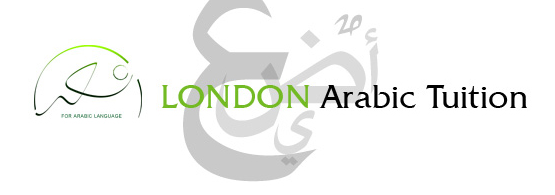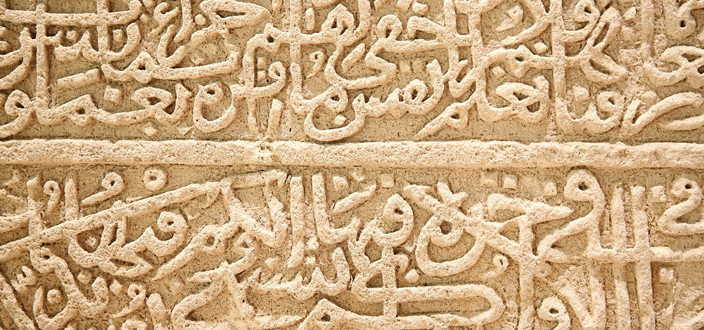Step by step instructions to Learn The Arabic Alphabet Fast: A Quickstart Guide for Beginners
Learning the letters in order in Arabic
Learning the Arabic letters in order can be scary. It’s a lot of various letters, is written an alternate way, and has a couple of decisions that you want to remember.
Difficult work without a doubt! I’ll be straightforward: learning the Arabic letters in order takes a touch of time. Furthermore figuring out how to really utilize it takes longer.
Be that as it may, it’s most certainly possible. What’s more – it’s not even that troublesome. Or possibly not quite as troublesome as you initially expect! I guarantee. In this post, I’m covering probably the main data about the Arabic letters in order.
This incorporates the actual letters, the four most significant highlights of the letters in order (and why they are somewhat simple to handle), and ways to learn it.
I’ll even discuss on the off chance that learning the Arabic letters in order merits your time. Spoiler alert: it is. How about we begin!
The Letters Of The Arabic Alphabet
How about we initially go over the whole Arabic letter set. In the table beneath, you see every one of the 28 Arabic letters.
For each letter, you see what it resembles in the “detached” structure (to a greater degree toward that later), what the letter is really named in Arabic, and afterward an estimation in English of what the letter seems like.
We should give it a look.
ا
alif
a ب
beh
b ت
teh
t ث
the
ss ج
jeem
j ح
hah
hh خ
khah
kh
د
dal
d ذ
dhaal
dh ر
reh
r ز
zain
z س
seen
ss ش
sheen
sh ص
pitiful
ss
ض
father
thd ط
tah
ttaw ظ
zah
thd ع
ain
ain غ
ghain
ghh ف
feh
f ق
qaf
cc
ك
kaf
kk ل
lam
l م
meem
m ن
early afternoon
n ه
heh
eh/h و
waw
w ى
yeh
yy/ee
As I said, the Arabic letters in order contain 28 letters. Not that not the same as the English letters in order of 26!
We should stop here briefly.
While this is an article explicitly about the Arabic letter set (I canvassed Arabic elocution in an alternate post), an update on articulation is helpful here.
The approximations of what these letters sound like are only that: approximations.
In the first place, different Arabic letters have not identical in English. An incredible model is the letter ع. The most ideal way to depict this is a guttural “stop” at the rear of your throat.
Likewise, the way to express letters isn’t dependably predictable all through words. Very much like English, and basically some other language. The “e” in the words “ask” versus “hear,” for instance. A remarkable distinction.
This shouldn’t imply that ALL Arabic letters are this way. The ن, for instance, basically consistently seems like a nn sound. Something to remember when learning the letter set!
The Four Most Important Aspects Of The Arabic Alphabet
We should move onto certain highlights of the Arabic letter set. I’ve restricted it down to the four generally significant “rules” you want to know. Truth be told, none of these are actually troublesome. However, they are bizarre from the outset!
1) Arabic Is Written Right To Left
This is the primary thing you should know (and most likely as of now do) about Arabic. This can be scary from the outset.
Composing right to left is new for the vast majority and takes some becoming accustomed to. Yet, very much like anything, time and practice are the critical fixings here. Also you become acclimated to it beautiful quick. Additionally, despite the fact that it’s all in all correct to left, it actually follows the “each flat line in turn” perusing style of most dialects.
When you practice (even only a tad), the way that you compose Arabic right to left is more similar to a “party stunt.” Not a genuine hindrance to learning.
One thing to remember: in the event that you are correct given and utilize a pen, you may wind up with a little ink on your hands. In any case, you’ll at long last comprehend the aggravation of left-handers!
2) Arabic Letters Are Connected In Words
Well… .a large portion of them. You don’t compose Arabic words as individual letters (like penmanship) yet associate them together. That makes it to some degree like cursive.
Presently, I said “the greater part of them.” That’s since certain letters present a “break” in the association of the letters. A genuine model is the absolute first letter ا (alif).
This will forever make a hole, constraining the following letter in the word to take it’s “confined” structure (see next element of the Arabic letter set).
Ordinarily, however (as my Arabic instructor told me), the letters get “stuck together.” The explanation this is confounding toward the start is that it can somewhat change the vibe of the actual letters.
Which carries us to #3…
3) Arabic Letters Will Vary Slightly Depending On Where They Are In The Word
This likely creates the most turmoil for fledglings.
To place it at the end of the day: a letter will appear to be unique in an Arabic word on the off chance that it’s toward the start (beginning), the center (average), or the end (last) of the word.
Sound confounding? It’s truly not, with a little practice. Allow me to clarify.
The table you read above presents Arabic letters in their confined structure (exactly what I call it).
That is, without help from anyone else and detached to a word.
When you really use it in a word, an Arabic letter can (however here and there doesn’t) change its look.
It’s essential to note here that a large portion of the letters don’t look that very different when they change. Notwithstanding where they are found in a word, most Arabic letters are very steady.
Simple to figure for novices!
All things considered, a few letters DO take on an alternate structure. This can be somewhat befuddling toward the start. Yet, it truly requires a tad of repetition retention. What’s more similar to I said toward the start – it simply requires some investment.
How about we rapidly take a gander at the letter ع that I previously referenced, also at what the letter resembles at various spots in three diverse Arabic words.
Confined structure Initial position Medial position Final position
ع عادي
3ady (“average”) بعد
Ba3d (after) طبع
Taba3 (propensity)
As you can see here, the letter ع changes its structure in all places of the word. It doesn’t appear to be identical in a word as it does in the detached structure. Intriguing, isn’t that so?
Like I said, most Arabic letters don’t change a lot. The letter ع is really an outrageous case. This “structure exchanging” is faster to learn than you might suspect.
Dislike you need to learn four unique forms of every one of the 28 letters! For this “association of letters,” I profoundly propose looking into a diagram. These are not difficult to track down with a fast Google search.
4) Arabic Doesn’t Have Vowels
You read that right! Arabic authoritatively doesn’t have vowels.
While this sounds truly odd for a local English speaker, it’s really not that a very remarkable issue by any means. That is on the grounds that Arabic does truth be told have letters that make vowel sounds. These are the last three letters in the Arabic letters in order: the ه, the و, and the ى.
Arabic depends on a “root framework.” This implies that any assortment of words can ordinarily be made from the “root” (typically three letters) by adding different letters.
As only one model, the root كتب (compose), contingent upon what letter you add (and where), can turn into author, library, book, and understudy.
You’ve presumably seen that these words are somewhat related. One more cool component of this “root” framework!
Ways to gain proficiency with The Arabic Alphabet
Since we’ve covered the Arabic letter set and four significant highlights you want to know, we should discuss how to really learn it.
Practice!
That shouldn’t by and large come as an astonishment. However, here I’ll give you three explicit ideas.
1) Practice Writing Arabic
Composing is certainly the primary thing you ought to do. It’s the most effective way to become alright with the Arabic letter set. Start with the singular letters.
For a novice, Arabic letters look more like convoluted pictures than letters. However, that confusion disappears soon enough.
Later you’ve dominated the singular letters, work on composing full words. It doesn’t significantly make any difference assuming that you know what they mean.
Composing Arabic normally constrains you to get to know the states of the letters. Furthermore, that will work on your capacity to comprehend the Arabic letter set much faster.
There are a lot of sites where you can observe practices composing full Arabic words. Use them for your potential benefit!
2) Practice Reading Arabic
Perusing in Arabic will additionally disguise how Arabic functions. Particularly how the letter structures change. Its same thing this time with the web.
Actually, any material of any trouble level (basically from the start) will do fine and dandy. That is on the grounds that the understanding of the language when first learning another letter set isn’t even the main thing. Rather, the knowledge of the letter set is.
Look at this rundown of the 11 best books for learning Arabic for some understanding of motivation.
3) Reverse Engineer Arabic Words
This is the place where you take a word and separate it into its part letters. Obviously, with Arabic, it’s not so natural as parting “glad” into h+a+p+p+y.
Keep in mind (as my Arabic educator told me): Arabic letters get “stuck together.” This implies that Arabic letters in a word are essentially cursive and that they change their structure contingent upon where they are in a word.
While this is befuddling from the start, it gets a lot more obvious. I guarantee. Indeed, in the event that you have been composing and understanding Arabic (even without comprehension everything), this has most likely currently happened normally!
Since you’re most likely seeing the letters that make up the words. Also that is central to seeing how the Arabic letter set functions.
Is It Actually Worth Your Time To Learn?
The inquiry you’ve been sitting tight for! Also it’s a substantial one. Since let’s face it: Arabic isn’t actually a stroll in the park.
Also, in the event that Arabic students are keen on speaking with Arabs, I typically suggest they pick Egyptian Arabic. Not Standard Arabic, which is considerably more formal.
So that implies learning the Arabic letter set is an exercise in futility… .correct? Not in any manner.
In the event that you’re learning Arabic (paying little heed to your reasons), it’s 100% worth your opportunity to become familiar with the Arabic letter set.
There’




Leave a Reply
You must be logged in to post a comment.